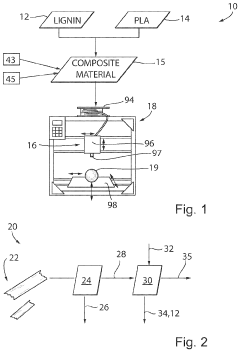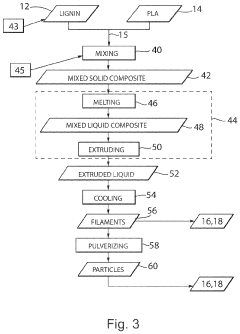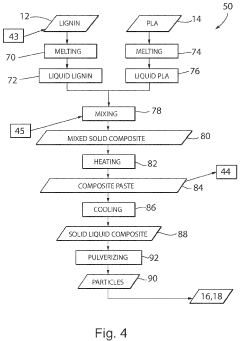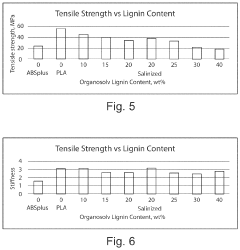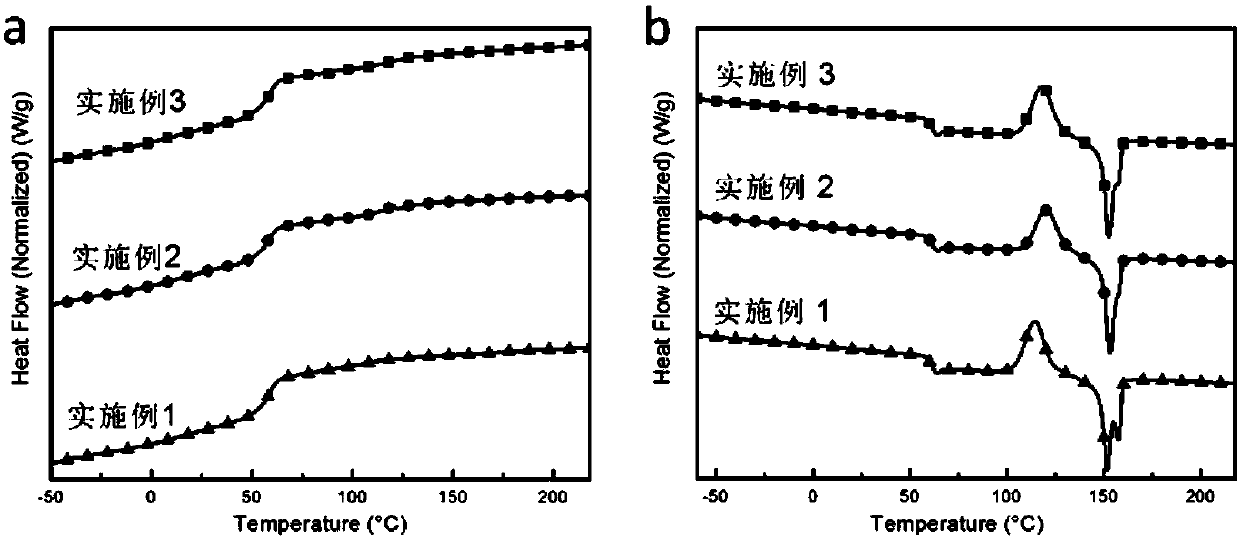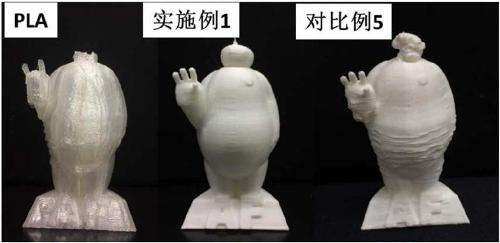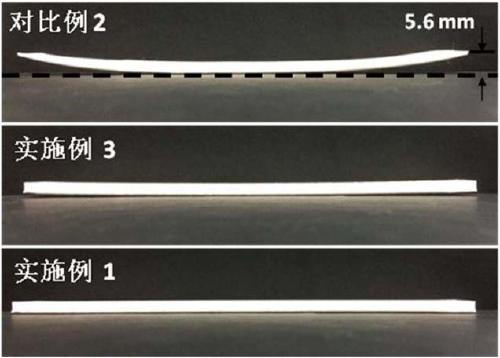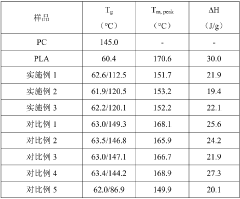How to Overcome Common Challenges with PLA 3D Printing?
JUN 25, 20259 MIN READ
Generate Your Research Report Instantly with AI Agent
Patsnap Eureka helps you evaluate technical feasibility & market potential.
PLA 3D Printing Overview and Objectives
PLA (Polylactic Acid) 3D printing has emerged as a popular and versatile additive manufacturing technology, revolutionizing various industries from product design to medical applications. This technology leverages the biodegradable thermoplastic polymer PLA to create three-dimensional objects layer by layer, offering a more sustainable alternative to traditional manufacturing methods.
The primary objective of this technical research is to identify and address the common challenges associated with PLA 3D printing, ultimately improving the quality, efficiency, and reliability of the printing process. By overcoming these hurdles, we aim to enhance the adoption of PLA 3D printing across diverse sectors and unlock its full potential as a manufacturing solution.
PLA 3D printing has evolved significantly since its inception, with advancements in printer hardware, software algorithms, and material formulations. The technology has progressed from basic prototyping applications to producing functional end-use parts, demonstrating its versatility and adaptability. However, several challenges persist, hindering its widespread adoption and limiting its capabilities in certain applications.
Key challenges in PLA 3D printing include issues related to print quality, such as warping, stringing, and layer adhesion problems. Additionally, the mechanical properties of PLA printed parts, particularly their strength and durability, often fall short of those produced by traditional manufacturing methods. Environmental factors, such as humidity and temperature fluctuations, can also significantly impact print quality and consistency.
To address these challenges, our research will focus on several key areas. We will explore advanced slicing algorithms and printer firmware optimizations to improve print quality and reduce defects. Material innovations, including the development of PLA composites and blends, will be investigated to enhance the mechanical properties and thermal stability of printed parts.
Furthermore, we will examine post-processing techniques and surface treatment methods to improve the finish and functionality of PLA printed objects. The integration of real-time monitoring and feedback systems will also be explored to ensure consistent print quality and enable adaptive printing processes.
By tackling these challenges, we aim to expand the applications of PLA 3D printing in industries such as aerospace, automotive, and healthcare. The successful resolution of these issues will pave the way for more reliable, high-quality 3D printed parts, fostering innovation and enabling new manufacturing paradigms.
The primary objective of this technical research is to identify and address the common challenges associated with PLA 3D printing, ultimately improving the quality, efficiency, and reliability of the printing process. By overcoming these hurdles, we aim to enhance the adoption of PLA 3D printing across diverse sectors and unlock its full potential as a manufacturing solution.
PLA 3D printing has evolved significantly since its inception, with advancements in printer hardware, software algorithms, and material formulations. The technology has progressed from basic prototyping applications to producing functional end-use parts, demonstrating its versatility and adaptability. However, several challenges persist, hindering its widespread adoption and limiting its capabilities in certain applications.
Key challenges in PLA 3D printing include issues related to print quality, such as warping, stringing, and layer adhesion problems. Additionally, the mechanical properties of PLA printed parts, particularly their strength and durability, often fall short of those produced by traditional manufacturing methods. Environmental factors, such as humidity and temperature fluctuations, can also significantly impact print quality and consistency.
To address these challenges, our research will focus on several key areas. We will explore advanced slicing algorithms and printer firmware optimizations to improve print quality and reduce defects. Material innovations, including the development of PLA composites and blends, will be investigated to enhance the mechanical properties and thermal stability of printed parts.
Furthermore, we will examine post-processing techniques and surface treatment methods to improve the finish and functionality of PLA printed objects. The integration of real-time monitoring and feedback systems will also be explored to ensure consistent print quality and enable adaptive printing processes.
By tackling these challenges, we aim to expand the applications of PLA 3D printing in industries such as aerospace, automotive, and healthcare. The successful resolution of these issues will pave the way for more reliable, high-quality 3D printed parts, fostering innovation and enabling new manufacturing paradigms.
Market Analysis for PLA 3D Printing
The PLA 3D printing market has experienced significant growth in recent years, driven by increasing adoption across various industries and the growing popularity of desktop 3D printing. The global PLA filament market was valued at approximately $200 million in 2020 and is projected to reach $300 million by 2025, with a compound annual growth rate (CAGR) of around 8%.
Several factors contribute to the rising demand for PLA 3D printing. Firstly, PLA's biodegradability and eco-friendly properties align with the growing emphasis on sustainability in manufacturing processes. This has led to increased adoption in industries such as packaging, consumer goods, and automotive, where environmental concerns are paramount.
The healthcare sector has emerged as a significant market for PLA 3D printing, particularly in applications such as medical implants, prosthetics, and anatomical models. The biocompatibility of PLA makes it an attractive material for these applications, driving market growth in this sector.
The education and research sectors have also contributed to the expansion of the PLA 3D printing market. Universities and research institutions increasingly utilize PLA-based 3D printing for prototyping, product development, and scientific research, fostering innovation and driving demand for PLA filaments and 3D printers.
In terms of regional market distribution, North America and Europe currently dominate the PLA 3D printing market, accounting for over 60% of the global market share. However, the Asia-Pacific region is expected to witness the highest growth rate in the coming years, driven by rapid industrialization, increasing adoption of 3D printing technologies, and government initiatives to promote advanced manufacturing.
The consumer segment of the PLA 3D printing market has shown steady growth, with hobbyists and small businesses contributing to the demand for desktop 3D printers and PLA filaments. This trend is expected to continue as 3D printing becomes more accessible and user-friendly.
Despite the positive market outlook, challenges remain in the PLA 3D printing industry. These include the need for improved material properties, such as heat resistance and mechanical strength, to expand the range of applications. Additionally, competition from other 3D printing materials and technologies may impact market growth.
In conclusion, the PLA 3D printing market shows promising growth potential, driven by sustainability trends, expanding applications across industries, and technological advancements. Overcoming common challenges in PLA 3D printing will be crucial for sustaining this growth and unlocking new market opportunities.
Several factors contribute to the rising demand for PLA 3D printing. Firstly, PLA's biodegradability and eco-friendly properties align with the growing emphasis on sustainability in manufacturing processes. This has led to increased adoption in industries such as packaging, consumer goods, and automotive, where environmental concerns are paramount.
The healthcare sector has emerged as a significant market for PLA 3D printing, particularly in applications such as medical implants, prosthetics, and anatomical models. The biocompatibility of PLA makes it an attractive material for these applications, driving market growth in this sector.
The education and research sectors have also contributed to the expansion of the PLA 3D printing market. Universities and research institutions increasingly utilize PLA-based 3D printing for prototyping, product development, and scientific research, fostering innovation and driving demand for PLA filaments and 3D printers.
In terms of regional market distribution, North America and Europe currently dominate the PLA 3D printing market, accounting for over 60% of the global market share. However, the Asia-Pacific region is expected to witness the highest growth rate in the coming years, driven by rapid industrialization, increasing adoption of 3D printing technologies, and government initiatives to promote advanced manufacturing.
The consumer segment of the PLA 3D printing market has shown steady growth, with hobbyists and small businesses contributing to the demand for desktop 3D printers and PLA filaments. This trend is expected to continue as 3D printing becomes more accessible and user-friendly.
Despite the positive market outlook, challenges remain in the PLA 3D printing industry. These include the need for improved material properties, such as heat resistance and mechanical strength, to expand the range of applications. Additionally, competition from other 3D printing materials and technologies may impact market growth.
In conclusion, the PLA 3D printing market shows promising growth potential, driven by sustainability trends, expanding applications across industries, and technological advancements. Overcoming common challenges in PLA 3D printing will be crucial for sustaining this growth and unlocking new market opportunities.
Current Challenges in PLA 3D Printing
PLA (Polylactic Acid) 3D printing has gained significant popularity in recent years due to its eco-friendly nature and ease of use. However, several challenges persist in achieving optimal print quality and consistency. One of the primary issues is warping, where the edges of the print curl upwards due to uneven cooling. This can lead to dimensional inaccuracies and poor adhesion to the print bed.
Another common challenge is stringing or oozing, which occurs when small threads of plastic are left behind as the print head moves between different parts of the model. This not only affects the aesthetic quality of the print but can also impact its structural integrity. Layer adhesion is another critical concern, particularly in prints with complex geometries or overhangs. Insufficient layer bonding can result in weak spots and potential print failures.
Print bed adhesion remains a persistent issue for many users. Inadequate adhesion can cause prints to detach mid-process, leading to failed prints and wasted material. Conversely, excessive adhesion can make it difficult to remove the finished print without damaging it or the print bed. Temperature control is crucial in PLA printing, as the material has a relatively narrow optimal temperature range. Fluctuations in printing temperature can lead to inconsistent extrusion, affecting print quality and strength.
Moisture absorption is another significant challenge with PLA filaments. Being hygroscopic, PLA can absorb moisture from the air, leading to degradation of the filament and poor print quality. This necessitates proper storage and handling practices to maintain filament integrity. Additionally, achieving consistent color and finish across different batches of filament can be challenging, especially when working on large projects that require multiple spools.
Print speed optimization presents a delicate balance between efficiency and quality. Printing too fast can lead to poor layer adhesion and surface defects, while printing too slowly can result in excessive heat buildup and potential deformation. Bridging and support structures pose their own set of challenges, particularly in complex models with significant overhangs or intricate details.
Lastly, post-processing PLA prints can be challenging due to the material's properties. Sanding, painting, and other finishing techniques may require specific approaches to achieve desired results without compromising the print's integrity. Addressing these challenges requires a combination of hardware optimization, software calibration, and refined printing techniques to consistently produce high-quality PLA 3D prints.
Another common challenge is stringing or oozing, which occurs when small threads of plastic are left behind as the print head moves between different parts of the model. This not only affects the aesthetic quality of the print but can also impact its structural integrity. Layer adhesion is another critical concern, particularly in prints with complex geometries or overhangs. Insufficient layer bonding can result in weak spots and potential print failures.
Print bed adhesion remains a persistent issue for many users. Inadequate adhesion can cause prints to detach mid-process, leading to failed prints and wasted material. Conversely, excessive adhesion can make it difficult to remove the finished print without damaging it or the print bed. Temperature control is crucial in PLA printing, as the material has a relatively narrow optimal temperature range. Fluctuations in printing temperature can lead to inconsistent extrusion, affecting print quality and strength.
Moisture absorption is another significant challenge with PLA filaments. Being hygroscopic, PLA can absorb moisture from the air, leading to degradation of the filament and poor print quality. This necessitates proper storage and handling practices to maintain filament integrity. Additionally, achieving consistent color and finish across different batches of filament can be challenging, especially when working on large projects that require multiple spools.
Print speed optimization presents a delicate balance between efficiency and quality. Printing too fast can lead to poor layer adhesion and surface defects, while printing too slowly can result in excessive heat buildup and potential deformation. Bridging and support structures pose their own set of challenges, particularly in complex models with significant overhangs or intricate details.
Lastly, post-processing PLA prints can be challenging due to the material's properties. Sanding, painting, and other finishing techniques may require specific approaches to achieve desired results without compromising the print's integrity. Addressing these challenges requires a combination of hardware optimization, software calibration, and refined printing techniques to consistently produce high-quality PLA 3D prints.
Existing Solutions for PLA 3D Printing Issues
01 Material properties and optimization
PLA 3D printing faces challenges related to material properties, including brittleness, low heat resistance, and limited mechanical strength. Researchers are working on optimizing PLA formulations and blending with other materials to enhance its performance for various applications.- Material properties and optimization: PLA 3D printing faces challenges related to material properties, including brittleness, low heat resistance, and limited mechanical strength. Researchers are working on optimizing PLA formulations and blending with other materials to improve these properties, enhancing the overall performance of printed parts.
- Print quality and surface finish: Achieving high-quality prints with smooth surface finishes remains a challenge in PLA 3D printing. Issues such as layer adhesion, warping, and stringing can affect the final product. Techniques for improving print quality, including optimized printing parameters and post-processing methods, are being developed.
- Environmental impact and biodegradability: While PLA is biodegradable, concerns exist regarding its environmental impact and degradation rate in various conditions. Research is focused on improving PLA's biodegradability and developing more eco-friendly additives and processing methods to enhance its sustainability in 3D printing applications.
- Printing speed and efficiency: Increasing printing speed while maintaining quality is a significant challenge in PLA 3D printing. Researchers are exploring ways to optimize printer designs, nozzle configurations, and material flow to improve printing efficiency without compromising the integrity of the printed objects.
- Functional and composite PLA materials: Developing functional and composite PLA materials for specialized applications is an ongoing challenge. This includes creating PLA-based composites with enhanced properties such as conductivity, flame retardancy, or antimicrobial characteristics. Research is focused on incorporating additives and reinforcing materials to expand the range of PLA 3D printing applications.
02 Print quality and surface finish
Achieving high-quality prints with smooth surface finishes remains a challenge in PLA 3D printing. Issues such as layer adhesion, warping, and stringing can affect the final product's appearance and functionality. Techniques for improving print quality and post-processing methods are being developed.Expand Specific Solutions03 Printing speed and efficiency
Increasing printing speed while maintaining quality is a significant challenge in PLA 3D printing. Researchers are exploring ways to optimize printer designs, nozzle configurations, and printing parameters to improve efficiency without compromising print quality or material properties.Expand Specific Solutions04 Environmental impact and biodegradability
While PLA is biodegradable, its degradation process and environmental impact are not fully understood. Challenges include optimizing the biodegradation rate, ensuring proper disposal methods, and developing more eco-friendly additives and processing techniques for PLA 3D printing materials.Expand Specific Solutions05 Large-scale and industrial applications
Scaling up PLA 3D printing for large-scale and industrial applications presents challenges in terms of consistency, cost-effectiveness, and meeting specific industry requirements. Researchers are working on developing specialized PLA formulations, printing techniques, and quality control methods for various industrial sectors.Expand Specific Solutions
Key Players in PLA 3D Printing Industry
The PLA 3D printing market is in a growth phase, with increasing adoption across various industries. The global market size for PLA 3D printing materials is expanding rapidly, driven by demand for sustainable and biodegradable alternatives. Technologically, PLA 3D printing is maturing, but challenges remain. Companies like BASF Corp., Arkema France SA, and China Petroleum & Chemical Corp. are investing in research to improve PLA properties and printing processes. Emerging players such as Holo, Inc., Mighty Buildings, Inc., and Velo3D US, Inc. are developing innovative solutions to address common issues like warping, layer adhesion, and surface finish. Universities and research institutions, including Shandong University of Science & Technology and Southern University of Science & Technology, are contributing to advancements in PLA formulations and printing techniques.
Impossible Objects LLC
Technical Solution: Impossible Objects has developed a composite-based additive manufacturing (CBAM) technology specifically designed to address common challenges in PLA 3D printing. Their approach involves layering carbon fiber or fiberglass sheets with thermoplastic powders, including PLA. The materials are fused using heat and pressure, resulting in parts that are stronger and more dimensionally stable than traditional PLA prints. This method helps overcome issues such as warping, poor layer adhesion, and limited mechanical properties often associated with PLA printing.
Strengths: Produces stronger parts with better dimensional stability. Reduces warping and improves layer adhesion. Allows for the creation of composite parts with enhanced mechanical properties. Weaknesses: Requires specialized equipment and materials, potentially increasing costs. May have limitations in terms of geometric complexity compared to traditional FDM printing.
Mighty Buildings, Inc.
Technical Solution: Mighty Buildings has developed a proprietary 3D printing technology called Light Stone Material (LSM) that, while not specifically using PLA, addresses many of the challenges associated with traditional 3D printing materials. Their system uses a photopolymer resin that cures under UV light, creating strong, lightweight structures. The technology allows for the printing of large-scale components with minimal waste and high precision. While not directly solving PLA-specific issues, their approach demonstrates innovative solutions to common 3D printing challenges that could potentially be applied to PLA printing in the future.
Strengths: Enables large-scale printing with high precision and minimal waste. Produces strong, lightweight structures. Addresses issues of scalability and structural integrity. Weaknesses: Not specifically designed for PLA, may require adaptation for PLA use. Potentially higher material costs compared to traditional PLA.
Innovative Approaches to PLA 3D Printing
Polyactic Acid and Lignin Composite Thermoplastic for 3D Printing
PatentInactiveUS20210171764A1
Innovation
- A composite thermoplastic material is developed by blending purified polylactic acid (PLA) with high amounts of purified lignin, using a silane coupling agent to improve compatibility, and optionally incorporating carbon fibers, which enhances mechanical properties and thermal stability, while being environmentally friendly and cost-effective.
Polylactic acid modified material for 3D printing, printing wire, and preparation methods of polylactic acid modified material and printing wire
PatentActiveCN109666272A
Innovation
- By introducing polycarbonate and aliphatic aromatic copolyester into PLA material, a ternary blend of PLA/PC-PBAT is formed, which improves the hardening speed and printing accuracy of the material and reduces warpage.
Environmental Impact of PLA 3D Printing
The environmental impact of PLA 3D printing is a crucial aspect to consider when addressing common challenges in this technology. PLA (Polylactic Acid) is a biodegradable thermoplastic derived from renewable resources, primarily corn starch or sugarcane. This characteristic gives PLA an advantage over petroleum-based plastics in terms of sustainability.
One of the primary environmental benefits of PLA 3D printing is its lower carbon footprint compared to traditional manufacturing methods. The production of PLA requires less energy and generates fewer greenhouse gas emissions than conventional plastics. Additionally, the additive nature of 3D printing results in less material waste, as objects are built layer by layer, using only the necessary amount of material.
However, the environmental impact of PLA 3D printing is not entirely positive. The biodegradability of PLA, while beneficial in principle, requires specific conditions to break down effectively. In most landfills, PLA may not degrade significantly faster than traditional plastics due to the lack of proper conditions. This raises concerns about the long-term accumulation of PLA waste in the environment.
The recycling of PLA presents another challenge. While theoretically recyclable, PLA requires specialized facilities for proper processing, which are not widely available. This limitation can lead to PLA products being disposed of in regular waste streams, negating their potential environmental benefits.
Energy consumption during the 3D printing process is another factor to consider. While PLA requires lower printing temperatures compared to some other materials, the extended duration of 3D printing jobs can result in significant energy use. Improving energy efficiency in 3D printers and optimizing print settings can help mitigate this impact.
The production of PLA filament also has environmental implications. While derived from renewable resources, the agricultural practices used to grow these crops can involve the use of pesticides and fertilizers, potentially impacting soil and water quality. Sustainable farming practices and the development of alternative feedstocks for PLA production are areas of ongoing research to address these concerns.
In conclusion, while PLA 3D printing offers several environmental advantages over traditional manufacturing and materials, it is not without its challenges. Addressing issues such as end-of-life disposal, recycling infrastructure, energy efficiency, and sustainable raw material sourcing are key to maximizing the environmental benefits of this technology. As the 3D printing industry continues to evolve, ongoing research and development efforts are focused on improving the overall sustainability of PLA and other 3D printing materials.
One of the primary environmental benefits of PLA 3D printing is its lower carbon footprint compared to traditional manufacturing methods. The production of PLA requires less energy and generates fewer greenhouse gas emissions than conventional plastics. Additionally, the additive nature of 3D printing results in less material waste, as objects are built layer by layer, using only the necessary amount of material.
However, the environmental impact of PLA 3D printing is not entirely positive. The biodegradability of PLA, while beneficial in principle, requires specific conditions to break down effectively. In most landfills, PLA may not degrade significantly faster than traditional plastics due to the lack of proper conditions. This raises concerns about the long-term accumulation of PLA waste in the environment.
The recycling of PLA presents another challenge. While theoretically recyclable, PLA requires specialized facilities for proper processing, which are not widely available. This limitation can lead to PLA products being disposed of in regular waste streams, negating their potential environmental benefits.
Energy consumption during the 3D printing process is another factor to consider. While PLA requires lower printing temperatures compared to some other materials, the extended duration of 3D printing jobs can result in significant energy use. Improving energy efficiency in 3D printers and optimizing print settings can help mitigate this impact.
The production of PLA filament also has environmental implications. While derived from renewable resources, the agricultural practices used to grow these crops can involve the use of pesticides and fertilizers, potentially impacting soil and water quality. Sustainable farming practices and the development of alternative feedstocks for PLA production are areas of ongoing research to address these concerns.
In conclusion, while PLA 3D printing offers several environmental advantages over traditional manufacturing and materials, it is not without its challenges. Addressing issues such as end-of-life disposal, recycling infrastructure, energy efficiency, and sustainable raw material sourcing are key to maximizing the environmental benefits of this technology. As the 3D printing industry continues to evolve, ongoing research and development efforts are focused on improving the overall sustainability of PLA and other 3D printing materials.
Quality Control in PLA 3D Printing
Quality control is a critical aspect of PLA 3D printing that significantly impacts the final product's performance and reliability. Implementing robust quality control measures helps overcome common challenges associated with PLA printing, such as warping, stringing, and inconsistent layer adhesion. A comprehensive quality control strategy begins with material selection and storage. PLA filament should be stored in a cool, dry environment to prevent moisture absorption, which can lead to poor print quality and increased likelihood of defects.
Printer calibration plays a crucial role in quality control. Regular maintenance and calibration of the printer's components, including the extruder, build plate, and motion systems, ensure consistent and accurate prints. Implementing a calibration routine that includes bed leveling, extruder temperature tuning, and flow rate adjustment can significantly improve print quality and reduce the occurrence of common issues.
Temperature management is another key factor in PLA quality control. Maintaining optimal printing temperatures for both the extruder and the build plate is essential for achieving good layer adhesion and preventing warping. Implementing temperature monitoring systems and adjusting settings based on environmental conditions can help maintain consistent print quality across different batches.
Print parameter optimization is a critical step in quality control. Fine-tuning settings such as layer height, print speed, and cooling fan speed can dramatically improve print quality and reduce defects. Developing and maintaining a database of optimal print parameters for different PLA filaments and print geometries can streamline the quality control process and ensure consistent results across multiple prints.
Post-processing techniques can also contribute to quality control in PLA 3D printing. Implementing standardized procedures for removing support structures, smoothing surfaces, and applying finishes can help achieve consistent final product quality. Additionally, incorporating quality checks at various stages of the printing process, including visual inspections and dimensional measurements, allows for early detection and correction of potential issues.
Implementing a robust documentation and traceability system is essential for long-term quality control. Maintaining detailed records of print parameters, material batches, and environmental conditions for each print job enables better troubleshooting and continuous improvement of the printing process. This data can be analyzed to identify trends and optimize printing parameters over time, leading to higher overall print quality and consistency.
Printer calibration plays a crucial role in quality control. Regular maintenance and calibration of the printer's components, including the extruder, build plate, and motion systems, ensure consistent and accurate prints. Implementing a calibration routine that includes bed leveling, extruder temperature tuning, and flow rate adjustment can significantly improve print quality and reduce the occurrence of common issues.
Temperature management is another key factor in PLA quality control. Maintaining optimal printing temperatures for both the extruder and the build plate is essential for achieving good layer adhesion and preventing warping. Implementing temperature monitoring systems and adjusting settings based on environmental conditions can help maintain consistent print quality across different batches.
Print parameter optimization is a critical step in quality control. Fine-tuning settings such as layer height, print speed, and cooling fan speed can dramatically improve print quality and reduce defects. Developing and maintaining a database of optimal print parameters for different PLA filaments and print geometries can streamline the quality control process and ensure consistent results across multiple prints.
Post-processing techniques can also contribute to quality control in PLA 3D printing. Implementing standardized procedures for removing support structures, smoothing surfaces, and applying finishes can help achieve consistent final product quality. Additionally, incorporating quality checks at various stages of the printing process, including visual inspections and dimensional measurements, allows for early detection and correction of potential issues.
Implementing a robust documentation and traceability system is essential for long-term quality control. Maintaining detailed records of print parameters, material batches, and environmental conditions for each print job enables better troubleshooting and continuous improvement of the printing process. This data can be analyzed to identify trends and optimize printing parameters over time, leading to higher overall print quality and consistency.
Unlock deeper insights with Patsnap Eureka Quick Research — get a full tech report to explore trends and direct your research. Try now!
Generate Your Research Report Instantly with AI Agent
Supercharge your innovation with Patsnap Eureka AI Agent Platform!
